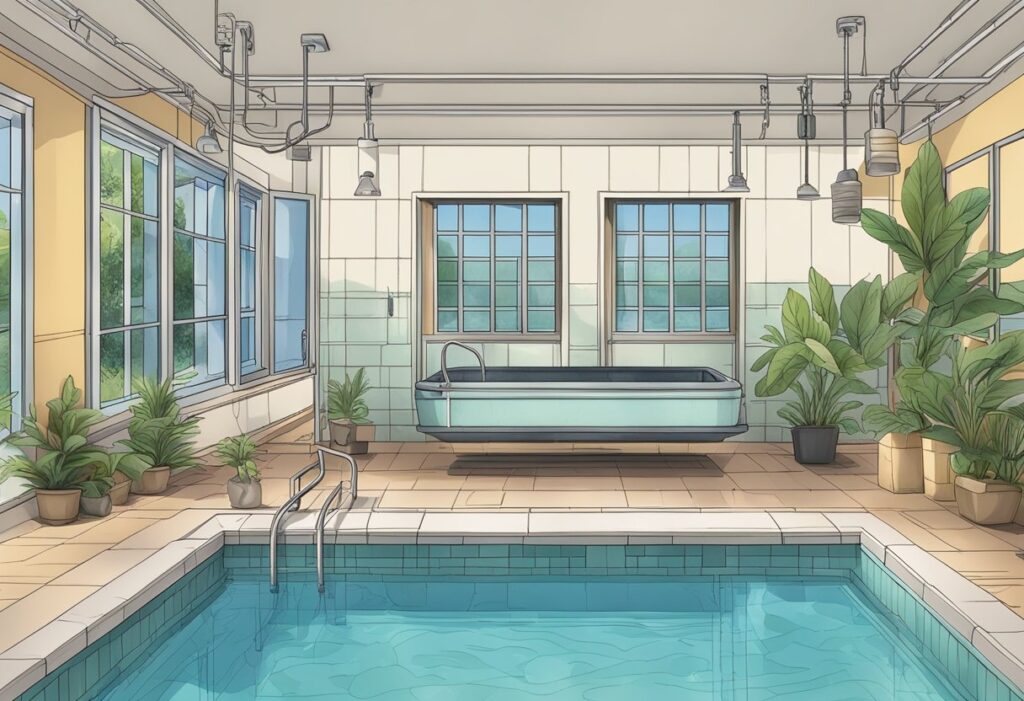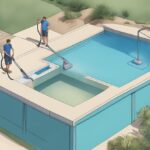Encountering a tripped breaker with your spa pool can be both inconvenient and concerning. It’s important to understand the common causes behind such an electrical issue. Your spa pool’s breaker is a safety device designed to protect the electrical circuit from damage caused by an overload or short circuit. When it trips, it’s a sign that there’s a problem that needs to be addressed to prevent potential hazards.

One cause of a tripped breaker can be associated with the heating element of your spa pool. A malfunctioning heating element can draw excessive current, leading to the breaker shutting off the power to prevent overheating and potential damage. Moreover, moisture exposure within the breaker box is another culprit that can lead to tripping.
Another possible reason for a tripped breaker is a failed component, such as a flooded ozonator or air blower. These components, if damaged, allow water infiltration where it’s not supposed to be, causing an electrical fault. Replacing the failing part is usually necessary to resolve the issue and get your spa pool up and running safely again.
Understanding Breaker Tripping and Spa Pools
When your spa pool trips the breaker, it’s a safety feature in action, signalling something in the electrical system requires attention. Understanding the common causes and the role of a ground fault circuit interrupter (GFCI) will help you identify and remedy the issue.
Common Causes of Tripping Breakers
Faulty Heating Element: A primary reason your spa pool’s breaker may trip is a damaged heater element. Such damage can cause an electrical short.
- Testing: Use a multimeter to check the element, ensuring the reading aligns with recommended specifications.
Electrical Overload: Your spa pool may draw more power than the circuit can handle, often due to multiple appliances on the same circuit.
- Resolution: Dedicate a circuit to your spa pool or reduce the load on the shared circuit.
Moisture Intrusion: Water or high humidity can cause ground faults, which will trip a GFCI breaker.
- Inspection: Regularly inspect seals and electrical components for moisture ingress.
Defective Components: Other spa pool parts like the pump, blower, or lighting could be faulty.
- Professional Assessment: Enlist a qualified electrician to examine these components.
Roles of GFCI in Spa Pool Safety
- Protective Measure: A GFCI breaker is designed to protect you from electrocution by detecting ground faults and cutting power to the circuit if a fault is detected.
- Regulatory Compliance: In Australia, safety standards require GFCI protection for all spa pool electrical systems.
- Check Compliance: Ensure your spa pool’s electrical system adheres to Australian Standards AS/NZS 3000.
- Testing GFCI Efficiency: Regular testing of the GFCI breaker is crucial for ensuring its responsiveness to faults.
- Testing Method: Engage the test button on the GFCI outlet monthly and after any major electrical event.
By familiarising yourself with these aspects, you ensure your spa pool’s safe and reliable operation, minimising instances of tripping breakers. If troubleshooting doesn’t resolve the issue, it’s critical to contact a licenced electrician.
Troubleshooting Electrical Issues
When your spa pool’s breaker trips, it’s crucial to check the spa’s electrical components and wiring for faults. Using a multimeter for testing and visually inspecting the system can reveal common issues such as loose connections or a faulty heating element.
Examining the Electrical Components
- Heater Inspection: The heating element is often a culprit in breaker trips. Use a multimeter to test for continuity. A lack of response usually indicates a need for replacement.
- Check the Control Panel: Look for signs of corrosion or wear. Aged components can lead to electrical failures.
- Receptacle Testing: Test the receptacle your spa is plugged into with an electric meter to ensure proper voltage and absence of shorts.
Inspecting these parts for exposure to moisture or damage is critical. Ground wires should be secure, and electrical connections need to be tight and free from corrosion.
Identifying and Resolving Wiring Problems
- Damaged Wiring: Inspect wiring for exposed wires or signs of wear. Damaged wiring is a safety hazard and must be promptly replaced.
- Loose Connections: Tighten any loose connections, as they can cause short circuits and tripping breakers.
- Reset the Breaker: After any adjustments to connections, reset the breaker to check if the issue persists.
Look for a potential short circuit in the wiring leading to the spa and ensure no part of the electrical system has suffered from flooded ozonator issues.
Preventing Future Power Issues

To ensure the longevity and safety of your spa pool, it’s crucial to maintain its components and consider system upgrades. Regular checks can prevent power issues that disrupt your relaxation experience.
Maintaining Spa Pool Components
Moisture and Loose Connections: Regularly inspect your spa pool for any signs of moisture exposure or loose connectors, which can lead to short circuits. Pay attention to rubber seals in the control box and ensure that the check valve is functioning properly to prevent a flooded air blower.
Ozonator and Blower Care: Check your ozonator and air blower for any signs of malfunction. A compromised ozonator can lead to moisture issues, so it’s important to keep these components dry and in good working order. If you encounter a flooded blower, replace it immediately to avoid electrical mishaps.
Upgrading Spa Pool Systems
Electrical System Assessment: If you’re frequently experiencing tripped breakers, it’s worth having an electrician assess your spa pool’s electrical system. They can identify if old wiring or persistent power fluctuations are to blame.
Enhanced Equipment: For peace of mind, consider upgrading to a more robust GFCI breaker that’s better equipped to handle power surges and lightning strikes. Upgrading other accessories, such as your sound system or towel warmers, to more energy-efficient models can also alleviate circuit overloads.
Through diligent maintenance and strategic upgrades, you can minimise the risk of power issues and safely enjoy your spa pool for years to come.
Professional Assistance for Spa Pools

When your spa pool’s breaker trips, seeking professional assistance is crucial to ensure safety and avoid further damage. A licensed electrician can accurately diagnose and repair any electrical issues your spa might have.
Wiring Issues: If you suspect a wiring short, it might be a complex problem that only a professional should handle. Electricians can assess your spa pool’s wiring, including wire connectors and cables, to identify and fix any shorts and loose wiring safely.
Water Leaks: Water leaks can be dangerous when they come into contact with electrical components. If check valves have failed, leading to a flooded component, a licensed electrician can replace them and repair any related electrical damage.
Faulty Heating Elements: A bad heating element is a common cause for breakers tripping. Only a professional should replace heating components, as they can ensure that new parts are compatible and installed correctly without compromising the electrical system.
Connector Integrity: Over time, plastic plug-in connectors may degrade or lose their integrity. Professionals use the appropriate wiring connectors to replace or repair these to prevent electrical faults.
It’s vital to have your spa pool regularly inspected by a professional, which can prevent many common electrical issues before they arise. Always remember, working with spa pool electrical systems requires expertise and should not be attempted without proper training and certifications.











